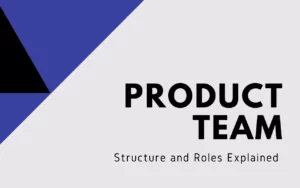Table of Contents
What is Scrum Meeting? Overview | Types | Examples
Are you feeling like you’re juggling multiple tasks? How do you know if your work is being completed virtually? And how do you stay on the same page with your team members to ensure everyone is pulling in the same direction? If any of these questions sound familiar, you need to start conducting scrum meetings. A scrum meeting (or Scrum) is designed to improve an organization’s performance and help teams reach their goals more effectively.
“81% of agile teams use Scrum, whether it’s Scrumban or a hybrid.”
Time to have a quick look at what a Scrum meeting is. This article will give you a brief overview of scrum meeting, how it is planned, and how it is conducted.

What is Scrum Meeting?
A Scrum meeting is a meeting in which the team and its stakeholders analyze the outcomes of the last sprint. The result of each sprint is an increment of product features, which should be high quality, ready to use, and delivered to users or customers.
The purpose of the meeting is to:
- Analyze progress on sprint goals and deliverables (sprint backlog items) and learn how to improve them.
- Also, adjust or remove an item from the product backlog depending on the outcome of the previous sprint (or two).
- Determine whether anything has changed that affects the development team’s ability to meet their commitments for future sprints.
Advantages of Scrum Meetings
Scrum meetings are a great way to keep your team on track, but they can also be a source of frustration. If you don’t have the right people in the room, or if they’re not prepared, it can be hard to get useful work out of your Scrum meetings.
To help you avoid these pitfalls, here are some advantages of scrum meetings that you might not know about:
- Helps everybody stay accountable
- Provides visibility into progress
- Encourages transparency and openness of communication
- Helps identify roadblocks early on so they can be removed before they become problems
- Helps keep teams focused on their goals instead of distractions (meetings!)
- Allows everyone to participate equally
Scrum Meeting Types
Scrum meeting types help to identify the roles of different team members. It also ensures any issues can be addressed as soon as possible so they don’t impact productivity.
The following are some common scrum meeting types that you can use to guide your team’s process:
Daily Scrum
The daily Scrum is a short, 15-minute meeting that occurs every day simultaneously. This meeting inspects progress toward completing sprint backlog items and plans upcoming tasks.
In this meeting, everyone on the team gathers together in one room or has scrum calls and answers three questions:
- What did I do yesterday? (This is called a “daily highlight” or “daily report.”)
- What am I going to do today? (This is called “planning poker.”)
- Is there anything blocking me from doing my work?
Sprint Retrospective
The Sprint Retrospective occurs at the end of each sprint and allows the team to evaluate how well they met their objectives. This meeting gives them time to reflect on what went well during that sprint, what didn’t go so well, and how they might improve in future sprints.
Sprint Review Meeting
The sprint review meeting is a chance for the product owner and team to present their accomplishments over the last sprint. The product owner asks the group questions about their progress and discusses any issues or roadblocks that may have occurred during the sprint. A standup meeting, in which each team member updates the status of their tasks, can replace this meeting if a project is managed with Kanban.
Backlog Refinement Meeting
The backlog refinement meeting is an opportunity for everyone on the team to collaborate on what should go into the next sprint’s backlog. The product owner brings up different ideas and asks other team members if they think it will make a good story or item in the backlog. This meeting is usually held after each sprint review so everyone can see what was completed during that period.
Sprint Planning
Sprint Planning occurs at the beginning of each sprint. It allows everyone to come together and discuss what needs to be done. This helps in achieving their goals (as well as any associated risks).
How to Run a Scrum Meeting?
The process of running a scrum meeting is easy and simple. But it requires some basic steps and techniques to make it effective. You may follow the below-mentioned tips and techniques and know how to run a perfect Scrum meeting:
Define Clear Objectives
Clear objectives will help you manage time effectively and improve productivity. You can also use these objectives to evaluate your progress at the end of every sprint cycle. This will also help you decide whether your team is performing according to plan!
Respect Time
The first thing to do when running your scrum meeting is respect time. One of the key rules of Scrum is that only allowed topics are discussed during the meeting. If you have a lot of other issues that need talking about during your session, set them aside until later in the day or after work hours so that you can use your time most effectively for discussing important issues related to your project.
Define Sprint Goals
At each daily scrum meeting, it’s important to define any changes or updates to goals for the current sprint. These could include additional tasks or changes in priorities based on new information from customer feedback or data collected during previous sprints. At this point, it is also important to clearly define the goal. So, everyone knows what they’re working towards during this development iteration.
Daily Scrums for Monitoring Progress
Each day before the start of your scrum meeting, each team member should review their tasks to ensure that they don’t miss anything important or forget something important by the end of the day. This will also allow them to ask questions about their work before going into their respective meetings with their managers or client representatives.
Keep Improving
Scrum meetings are designed to help teams improve performance by sharing their experiences transparently. This helps them identify areas where they can improve their performance and implement those changes immediately.
Final Words
Scrum meetings are about collaboration, where every team member presents their progress for the past. It acts as a communication tool that ensures that information is shared by team members and provides transparency between developers and the Product Owner.
Scrum planning poker is a great tool to have at your disposal regarding project management. It gives you the flexibility to plan any size project with a group of people that could be anywhere in the world.












